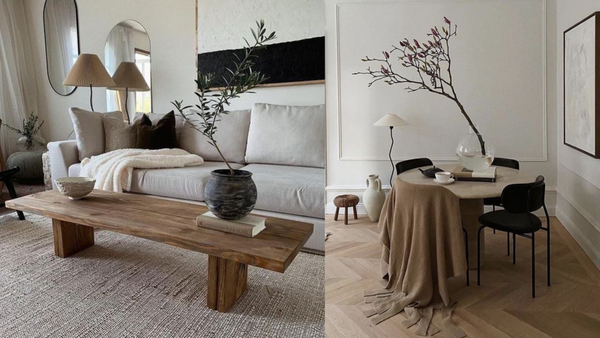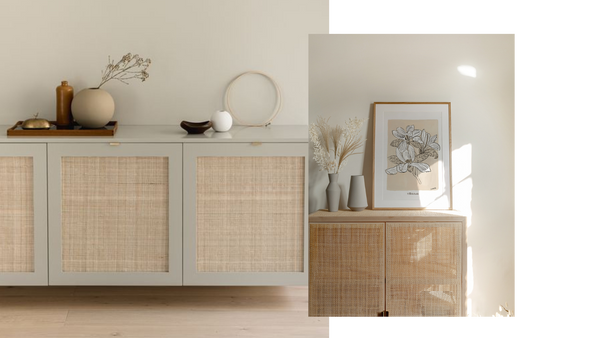What is meant by “Japandi”?
Furnishings that combine Japanese and Scandinavian influences are called "Japandi" and are very popular.
Where does this trend come from?
This trend could be due to the desire to transform our homes into our own sanctuary to rest and recharge. Awareness of our throwaway culture and the need for more sustainability has also increased.
The combination of two styles
Orderly, minimalist: Japanese
Japanese design is known for its orderly, minimal and utilitarian style and there is still a great respect for high craftsmanship today. This also reflects the Japanese people's love of natural beauty and imperfection, also known as wabi-sabi.

Images via Pinterest
Scandinavian cosiness
Scandinavians want comfortable, cozy homes that feel warm and inviting . Keyword: Hygge , a living feeling that inspires Scandi fans all over the world. Furthermore, a balance between form and function is the focus of Scandinavian design.
Soft colors and natural materials
Both interior design styles emphasize aesthetics , materials and craftsmanship . They value well-made and long-lasting products that are in harmony with nature and value a natural, soft color palette .

Images via Pinterest
Japandi: A harmonious and reduced style
Combining these two furnishing styles creates a beautiful, harmonious and reduced style that corresponds to the philosophy “less is more”. It is minimalist and modern , with a touch of luxury that comes from simple designs with deliberate details that highlight the beauty of the materials.
An aesthetic that lasts longer than a season
What's important to recognize is that "Japandi" may have become a buzzword, but this style is not just a fleeting trend, but simply a short description of an aesthetic that is here to stay.
How to bring this aesthetic into your home
Minimalist and relaxing
Imagine minimalist spaces that feel uncluttered but inviting - relaxing but still interesting, thanks to special accents, textures and earthy colors.
In summary: 5 tips for your implementation
-
Use natural materials: Choose materials such as wood, bamboo, linen and wool to connect with nature and create a warm, inviting atmosphere.
-
Keep it minimalistic: focus on the essentials and avoid unnecessary decorations. Every piece in your space should serve a purpose or bring joy.
-
Neutrals and earth tones: Choose a palette of soft, calming colors. Favor white, gray, beige and other natural tones to create a peaceful and harmonious environment.
-
Maintain balanced lighting: Use both direct and indirect light to create a warm and inviting atmosphere. Natural light plays an important role, so maximize its presence in your space.
-
Incorporate living elements: Plants and flowers bring life to your space and promote well-being. Choose plants that match the aesthetics of the room and are easy to care for.
There is no real rule that the pieces have to come from Japan or Scandinavia. What is important is a harmonious balance of natural and soft tones, natural materials and a willingness to minimalism.
Extra tip:
If you don't want to live a minimalistic life, but still don't want to miss out on the clean look, you should use discreet storage boxes.

